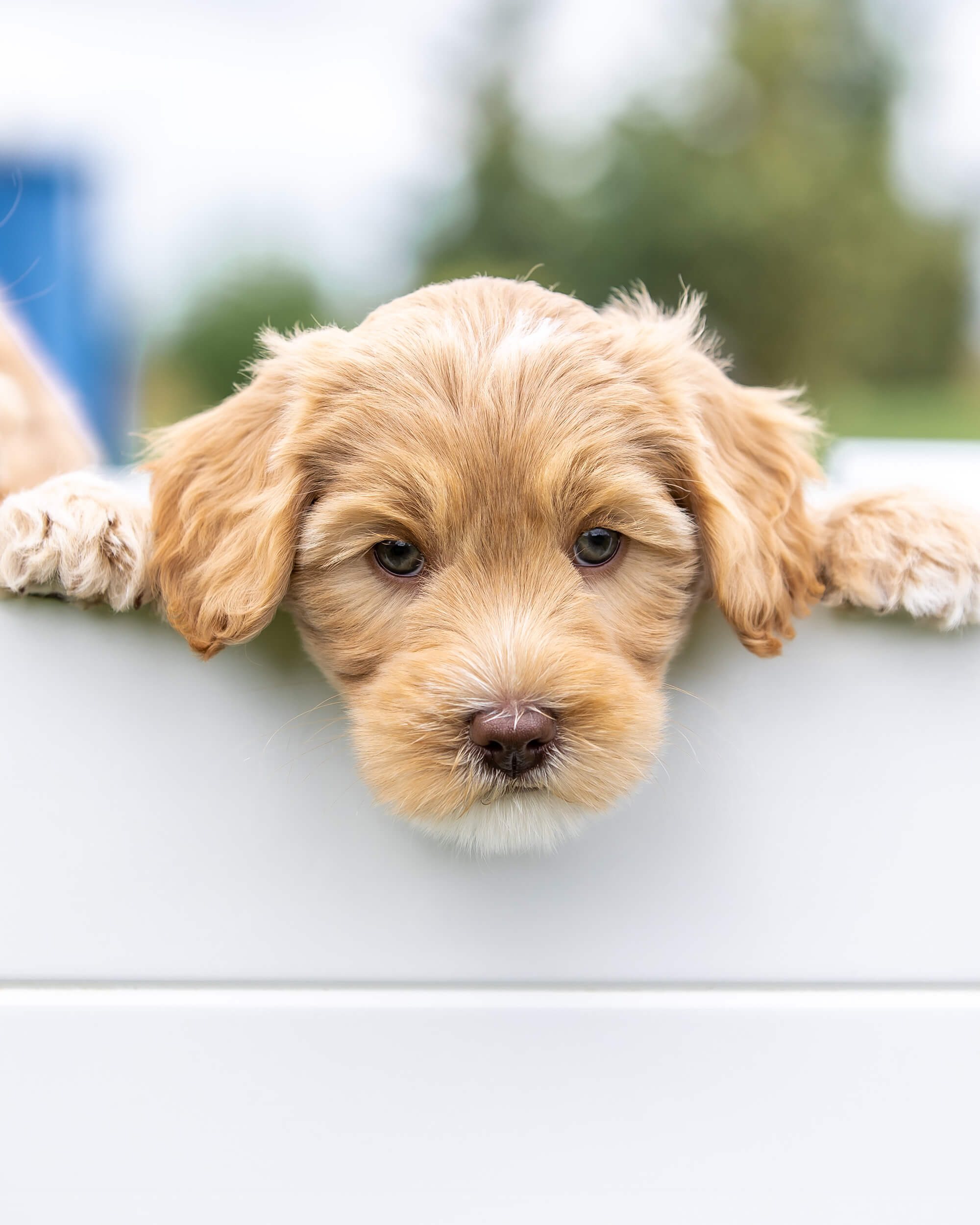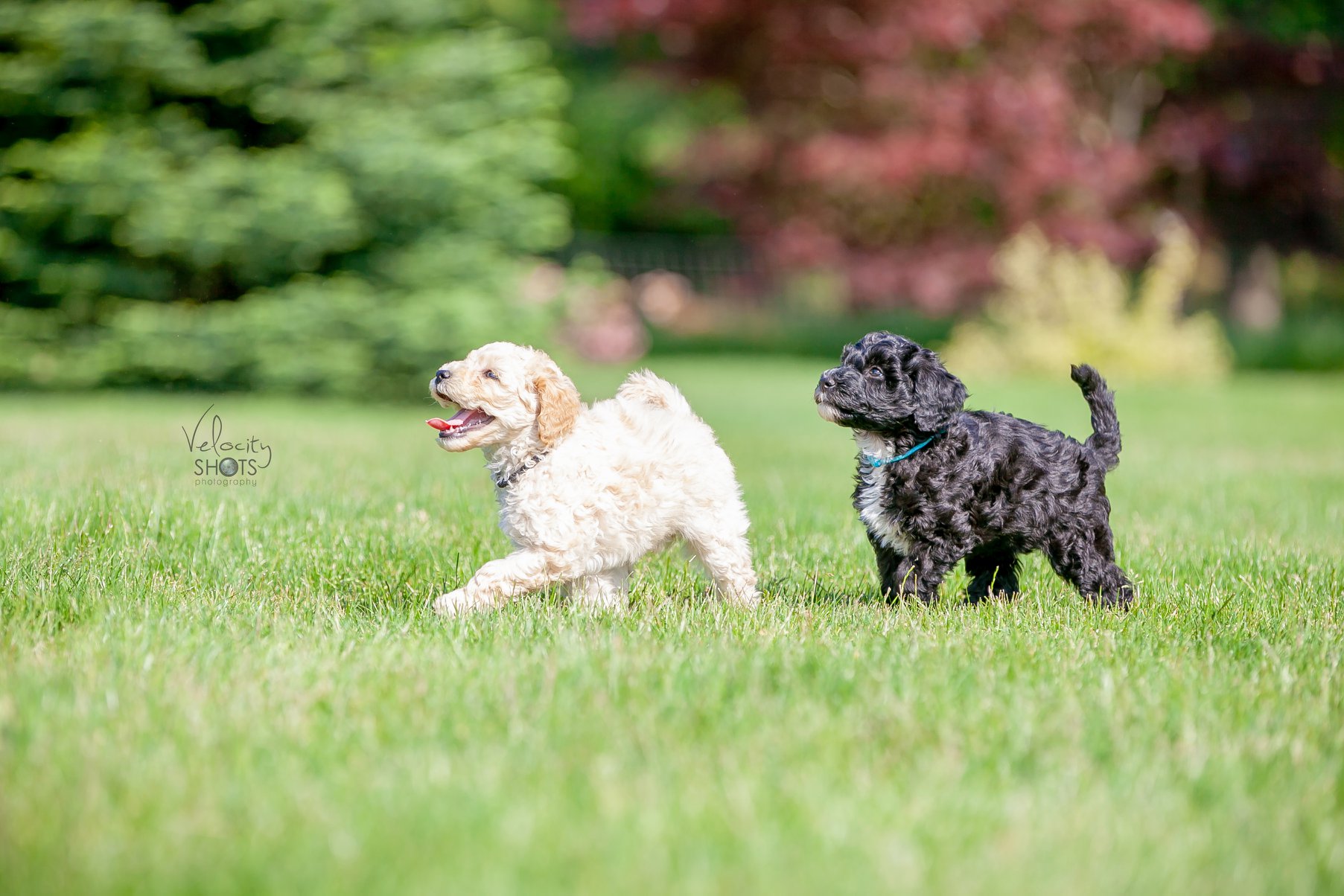Breed Info
Labradoodle Information
The Labradoodle was intentionally first bred in Australia in 1988. Labradoodles were developed primarily as healthy allergy-friendly dogs with a uniquely intuitive, easily trainable mind. These dogs are well-suited for assistance dogs for the physically or emotionally challenged child or adult. The combination of the Labrador retriever and the Standard Poodle created a special kind of dog with the attributes of the Labrador retriever, easy tempered working dog for service, being adored for its loyalty, warmth and gentleness. This made the perfect complement to the poodle, which is hailed for its superior intelligence, trainability, lack of shedding, and allergy-friendly coat.


From here further development was done with parent breed infusions added to the Labrador x Poodle cross lines. The developers of the breed sought out complimentary attributes to develop the qualities that we now find and love in the Australian Multi-Generational Labradoodle. Over the years breeding practices expanded to create superior traits, both in physical conformation and mental temperament that were required of an assistance dog.
In 2004 it was announced that the Australian Labradoodle was not just a Labrador x Poodle cross but it was a breed in its own right developed over many years with particular goals in mind. Recognized now by IALA, ALA, ALAA and the ALCA.
Australian Multi-generational Labradoodles that are carefully selected for health and temperament display amazing intuition and trainability. These allergy friendly dogs have a calm and steady demeanor and live to take care of their human companions. Ask any owner of an Australian Multi-generational Labradoodle and they will attest to the intelligence and sweet soft spirit of these dogs. Not only are the pups as cute as can be, their attributes, along with their allergy-friendly coats, makes the labradoodle one of the most sought after pets and family companion.
First Generation labradoodle or F1
The result of the breeding of a Labrador retriever to a poodle. Coats can be somewhat inconsistent at this stage. The F1 puppy may be shedding or non-shedding, and its coat may be wavy or wispy. The pups may vary greatly in appearance within the same litter. This puppy is a 50/50 mix of a lab and a poodle. The pup will have a wonderful temperament and make a trainable companion. An F1 cannot, however, be counted on to be suitable for those who suffer from allergies or asthma.
F1B labradoodle or F1B
is the result of the purposeful crossing back of the F1 dog to a poodle. This is done to produce the fleece coat with a lightly springy silk feel. It is more likely suited for allergy sufferers and will be low to non-shedding.

The Multi-Generational Labradoodle
is typically non-shedding or very low shedding. It is the crossing of F1B to F1B or Multi-Gen to F1B, or Multi-Gen to Multi-Gen. It is the result of careful planning for temperament and conformance to the breed for several generations. Both F1B and Multi-Gen Labradoodles provide the coat and low- to non-shedding quality that Labradoodles are known for.
Australian Multi-Generational Labradoodles
Usually is the result of crossing an Australain Multi-Gen Australian labradoodle to another Australian Multi-Gen labradoodle. The Foundation dogs developed at the research centers in Australia have infusions of the following breeds:
- 1) Poodle
- 2) Labrador Retriever
- 3) Irish Water Spaniel
- 4) Curly Coat Retriever
- 5) American or English Cocker Spaniel
Each of these foundational infusions were used to strengthen desirable attributes for temperament, health, coat and conformation (body structure).
These qualities are what set the Australian Multi-Generational Labradoodle apart from any other type of Labradoodle.

Labradoodle Sizes
Labradoodles come in three officially recognized sizes, which means that there is a Labradoodle for every family and every size home.
The standard set by the Australian Labradoodle Association of America for the Australian Labradoodle and the Labradoodle are the same in reference to size and structure for the Miniature Labradoodle, Medium Labradoodle and Standard Labradoodle. Size is determined by measuring from the floor to the top of the shoulder.
Miniatures
14–16 inches in height and 15-25 lbs in weight.
Mediums
17–20 inches in height and 25-45 lbs in weight.
Standards
21–24 inches in height and 50 to over 65 lbs in weight.
In general, the Labradoodle, either Australian or not, should appear athletic and graceful with a compact body that displays substance with medium boning. They should not appear heavy nor overly fine in boning.
Labradoodles Colors
Labradoodle colors vary widely and include solid and “parti-colors”. Coat color will range in shade and intensity.
- Chalk / White – White does not necessarily mean “white.” Shades can range between white and cream.
- Cream / Gold – This is richer in color than a chalk or white. Ranging from just hints of gold to a deeper gold.
- Apricot – Often apricots will fade some over time. But some do darken.
- Red – A “true red” will be quite dark and red. Again, some will fade to an apricot but others will retain their deep dark red. Both are beautiful.
- Chocolate – This color can range from a “dark chocolate” to a “milk chocolate.” The chocolate color may stay a rich chocolate or fade over time.
- Black – Unlike some of the other colors, a true black should retain their color. If there are any recessive genes in the line for silver or blue, the pup can fade to silver.
- Parti – The base color is white with large areas of another color.
Coat Types
The Labradoodle is a developing breed who currently demonstrates 3 very different coat types. It is essential that a buyer is familiar with each type and the benefits it affords in order to be completely satisfied with their doodle’s coat. We strive to produce allergy friendly coats in the richest colors.
Fleece: Open Fleece coat, non-shedding
Wavy fleece coat, non-shedding
Curly fleece coat, non-shedding
Wool coat: non-shedding
Hair coat: F1 and F1B Labradoodle, hair coat, slight shedding
Temperament
Labradoodles are known for their gentle, playful temperaments and intelligence. They are happy, loyal, affectionate, friendly, confident, non-aggressive, intuitive, and clever. They are easy to live with, train and a delightful family member to have.
Life Expectancy
12-15 years



